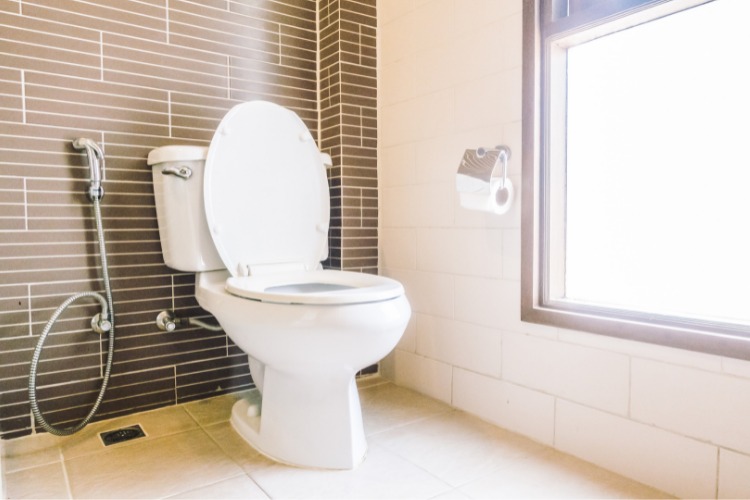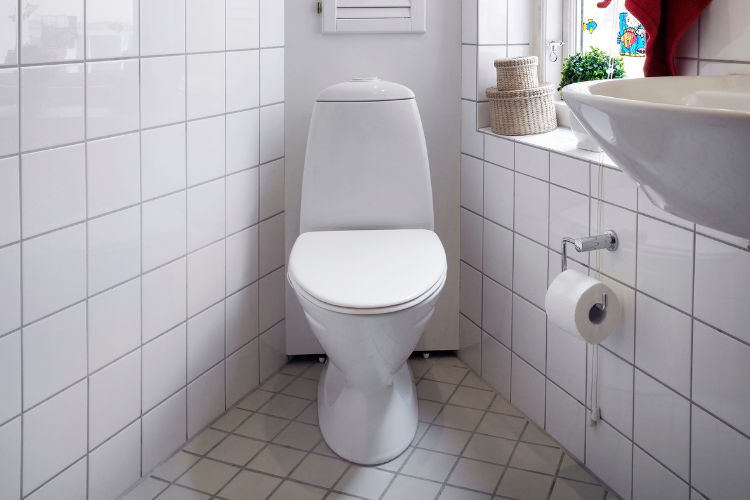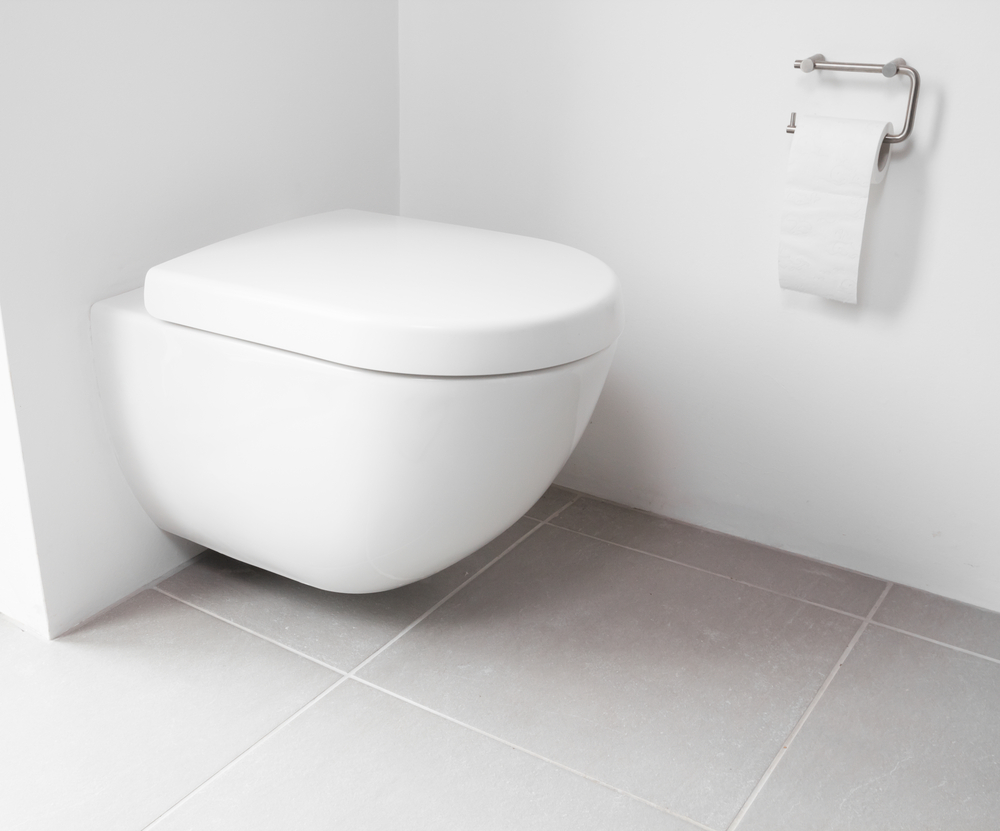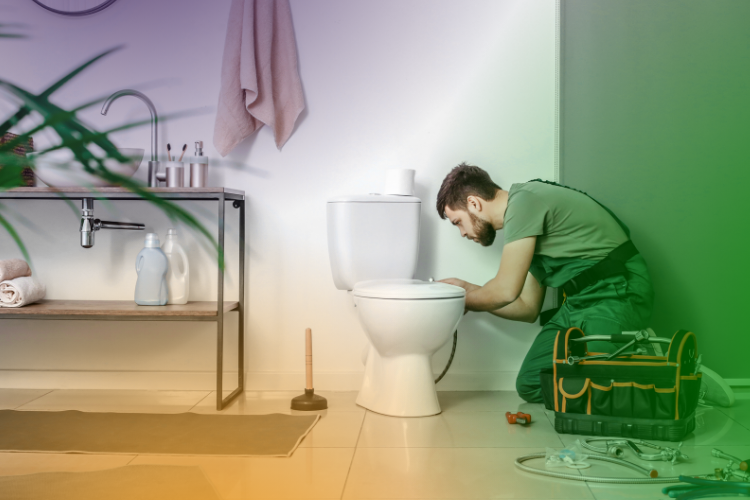How much does it cost to replace a toilet?
If there is one thing that people tend to stay clear of its plumbing and electrics. Although replacing a toilet seems like a simple and straightforward job it can cost more in the long run if installed incorrectly. If you are not keen on DIY or are unsure how to install a toilet correctly, then it’s a job best left to the professionals. From costs to toilet choices, this guide will tell you all about the costs involved in replacing a toilet.
Supply and Installation Costs
Although there are various factors that can impact the total cost to supply and install a toilet, here is an estimated cost guide on how much it will cost depending on the type of toilet you choose:
|
TYPE OF TOILET |
SUPPLY COSTS |
INSTALLATION COSTS |
|
Close Coupled Toilet |
£100-£200 |
£100-£200 |
|
Hidden or Wall Hung Cistern |
£250-£400 |
£300-£400 |
|
Low Level Cistern |
£125-£200 |
£150-£250 |
|
High Level Cistern |
£150-£300 |
£150-£230 |
|
Specialised Hands-Free Toilet |
£500-£2000 |
£500+ |
Labour Costs and Time Frames
Labour costs for installing a toilet vary depending on several factors, including the type of toilet you have installed, whether you need any plumbing work, and where you live. The average plumber will charge between £40 to £60 per hour or a daily rate between £320 to £480 in most parts of the UK. For those in and around London, the total cost of a job of installing a toilet may cost up to £200 more than those in the North. If any additional plumbing work is required whilst fitting a new toilet, then it could cost significantly more.
Most toilets such as a close-coupled toilet can be installed within 2 to 4 hours which will cost between £100-£400 depending on the toilet, any plumbing work that needs to be done and location. A specialised hands-free toilet can take up to 6 hours to complete with labour costs ranging between £400-£600 as they are harder to install than a traditional toilet.
Additional Cost Factors
Although a price guide can give you an idea on how much it will cost to install a toilet there are many individual factors that can impact the total cost of a toilet installation. Some factors include:
Isolation Valves
Most toilets are already fitted with an insolation valve which allows a plumber to stop the water flow to a toilet. Without an insolation valve, your home’s water supply will have to be completely shut off not only making it inconvenient but costly.
Accessibility
Rooms that are tight and narrow for example cloakroom toilets, ensuites, or toilets in lofts, may increase the cost of a toilet replacement as they are harder to access and take more time to install. Also, if any pipework that is needed to install the toilet is hard to access, this could involve removing tiles or accessing the loft, then this can increase the total cost of the installation.
Age and Condition of Plumbing and Property
As a homeowner you may not be aware of the condition of your plumbing. When removing your old toilet, old or damaged plumbing and leaks may be detected which can raise the cost of any job. Any pipework or repairs need to be fixed before the installation of a new toilet so that it will not cause problems or cost more down the line. Lead pipes are common in older properties. These should be replaced when changing your toilet.
Removing the Old Toilet
Removing your old toilet may be done by yourself, but if you are unsure on how to properly remove a toilet, then it is best to hire a plumber to do this for you. Not only are porcelain toilets easy to break, but the cisterns must also be drained of water and waste before they can be removed. Failure to remove water and waste could lead to water damage which will add to the total costs. The average cost to remove a toilet depends on the plumber but the cost to remove a toilet can range between £75 to £150.
Types of Toilets
It can be hard to choose a toilet with the number of toilets available on the market today. However, we have broken down the pros and cons of each of the top toilet designs so you can decide which toilet is right for you!
Close-Coupled Toilet
 At £100 to £200, close coupled toilets are the most popular choice of toilet. The cistern of a close coupled toilet is attached to the pan and is available in both modern and traditional designs as well as colours. Advantages of a close-coupled toilet include its easy installation, availability in a range of designs and colours, great toilet for smaller rooms and they don’t require any external plumbing. Some disadvantages however include harder to clean, are easier to damage than other toilets and finally cannot hide plumbing as easily as other toilets can.
At £100 to £200, close coupled toilets are the most popular choice of toilet. The cistern of a close coupled toilet is attached to the pan and is available in both modern and traditional designs as well as colours. Advantages of a close-coupled toilet include its easy installation, availability in a range of designs and colours, great toilet for smaller rooms and they don’t require any external plumbing. Some disadvantages however include harder to clean, are easier to damage than other toilets and finally cannot hide plumbing as easily as other toilets can.
Corner Toilet
 Due to their shape these toilets are perfect for toilets in a downstairs cloakroom. They are slightly pricier at £150 to £300 but are great if you are looking maximise the most space of a room. Advantages of a corner toilet are they are modern in design, designed to fit in corner to save space, and are great for smaller bathrooms. The main disadvantage of a corner toilet is that they are harder to install due to the waste pipe which is more difficult to install in a corner. It is recommended that that you consult a plumber to see whether a corner toilet will fit in a tight corner in your bathroom.
Due to their shape these toilets are perfect for toilets in a downstairs cloakroom. They are slightly pricier at £150 to £300 but are great if you are looking maximise the most space of a room. Advantages of a corner toilet are they are modern in design, designed to fit in corner to save space, and are great for smaller bathrooms. The main disadvantage of a corner toilet is that they are harder to install due to the waste pipe which is more difficult to install in a corner. It is recommended that that you consult a plumber to see whether a corner toilet will fit in a tight corner in your bathroom.
Wall Hung Toilet
 Wall hung toilets have become more popular in recent years due to their modern style. These toilets float above the floor with most pipework, fittings and cistern concealed. The cistern is installed in the wall to save space. Wall hung toilets tend to cost between £250 and £400. The benefits of a wall hung toilet are their modern design and range of design availability, ability to clean under the toilet, can increase the value of a property and are a perfect choice for smaller bathrooms. However, they are more of an expensive toilet choice, can be difficult to install, a concealed cistern has to be bought alongside the toilet, and the wall may have to reinforced to support the toilet.
Wall hung toilets have become more popular in recent years due to their modern style. These toilets float above the floor with most pipework, fittings and cistern concealed. The cistern is installed in the wall to save space. Wall hung toilets tend to cost between £250 and £400. The benefits of a wall hung toilet are their modern design and range of design availability, ability to clean under the toilet, can increase the value of a property and are a perfect choice for smaller bathrooms. However, they are more of an expensive toilet choice, can be difficult to install, a concealed cistern has to be bought alongside the toilet, and the wall may have to reinforced to support the toilet.
Low and High-Level Toilets
Both low and high-level toilets are similar if you are looking for a more traditional style of toilet. The main difference however it the placement of the cistern. Like the name suggests, the cistern is fitted at a lower level on the wall for a low-level toilet, and at a higher level for a high-level toilet. Both toilets connect the pan of the toilet through a chrome flush pipe. Low-level toilets are slightly cheaper and can range between £125 to £200 whereas high-level toilets start at £150 and can be as expensive as £300. The advantage of these toilets is their traditional and sleek design with the only disadvantage being that they need to be attached to either a solid or reinforced wall.
